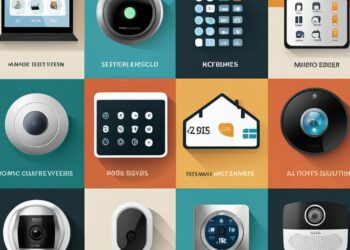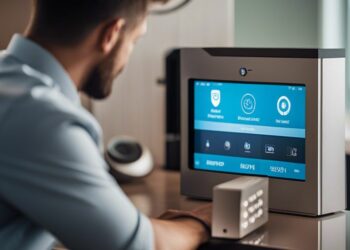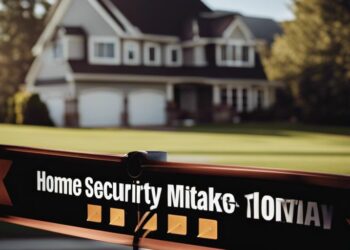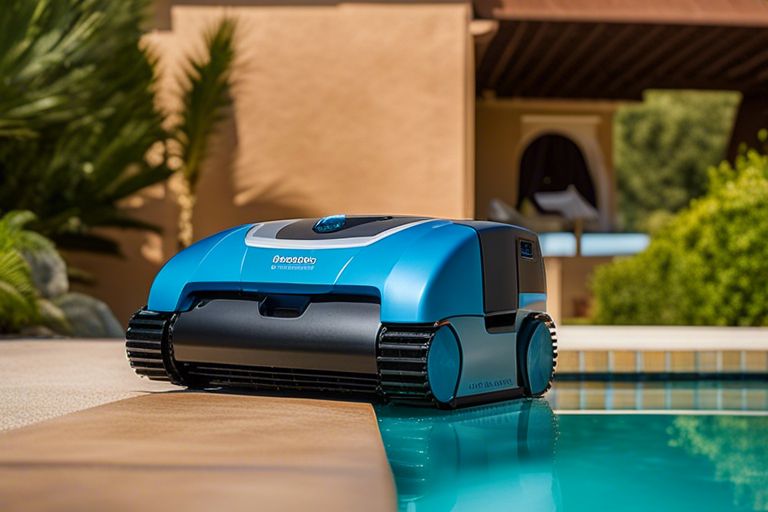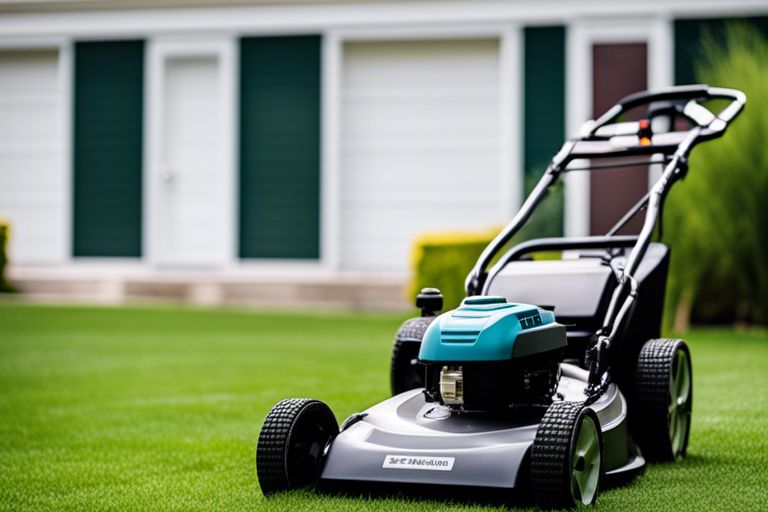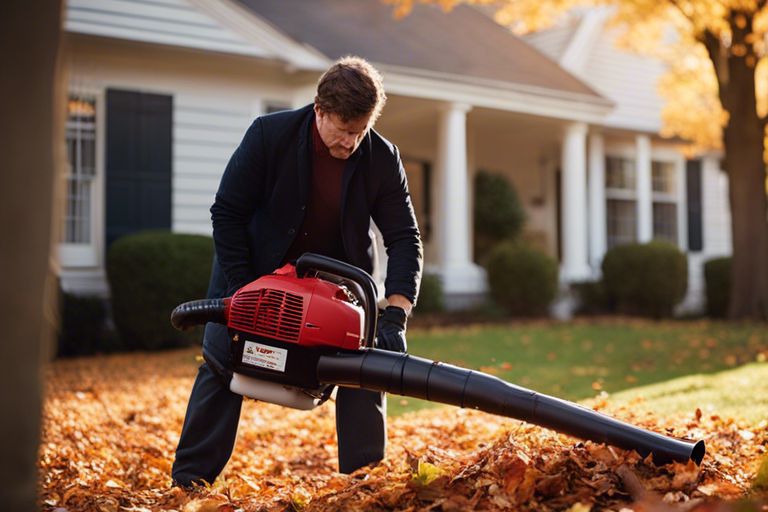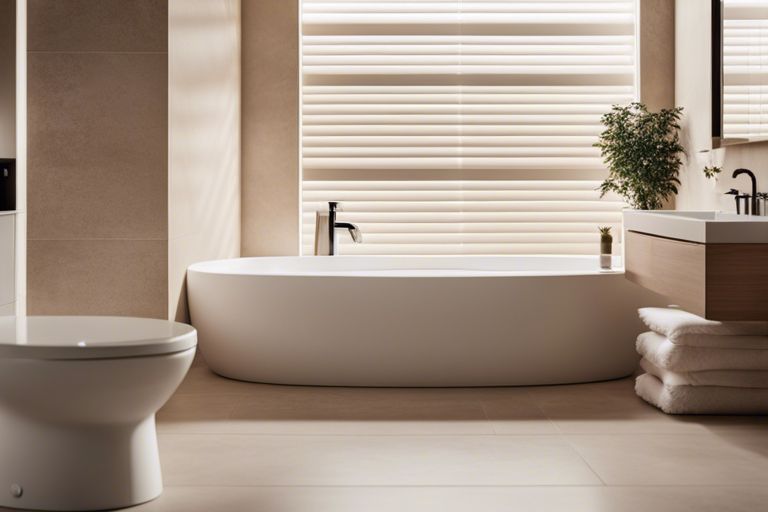Most homeowners prioritize the safety and security of their families and belongings. Integrating security cameras and alarms is a crucial step towards achieving peace of mind and increased protection. In this informative guide, we will explore the benefits of combining these two technologies to create a comprehensive home security system that deters potential intruders and provides real-time monitoring capabilities. Let’s examine into the world of home safety and discover how you can enhance your security measures effortlessly.
Contents
- 1 Assessing Home Security Risks
- 2 Benefits of Integrating Security Cameras and Alarms
- 3 Choosing the Right Security Cameras
- 4 Selecting Effective Alarm Systems
- 5 Installing Security Cameras
- 6 Configuring Alarm Systems
- 7 Integrating Cameras and Alarms
- 8 Monitoring and Maintaining Your System
- 9 Addressing Privacy Concerns
- 10 Budgeting for Home Security
- 11 Considering Professional Installation
- 12 Overcoming Common Challenges
- 13 Future-Proofing Your Home Security
- 14 Conclusion
- 15 FAQ
Assessing Home Security Risks
While enhancing home safety, it is crucial to start by assessing the potential security risks that your home may face. By identifying these risks, you can take appropriate measures to mitigate them effectively.
Identifying Potential Entry Points
Home security experts recommend starting by identifying all potential entry points into your home. This includes doors, windows, skylights, and other vulnerable areas that intruders may target. By understanding where your home is most susceptible to break-ins, you can focus on securing these areas with alarms, cameras, and other deterrents.
Evaluating Existing Security Measures
Any existing security measures in place should be carefully evaluated to determine their effectiveness. This includes alarm systems, security cameras, motion sensor lights, and smart locks. Assess whether these measures are functioning correctly and if they provide adequate protection for your home.
It is imperative to update outdated security measures and invest in new technologies to enhance the overall security of your home. Regular maintenance and upgrades are key to keeping your home safe from potential threats.
Benefits of Integrating Security Cameras and Alarms
Enhanced Visual Surveillance
One of the key benefits of integrating security cameras and alarms in your home is enhanced visual surveillance. By strategically placing cameras around your property, you can monitor and record any suspicious activity in real-time. This not only acts as a deterrent to potential intruders but also provides valuable evidence in the event of a security breach.
With advancements in technology, modern security cameras offer high-definition video recordings that can easily be accessed remotely through your smartphone or computer. This means you can keep an eye on your home from anywhere in the world, giving you peace of mind knowing that your property is safe and secure.
Improved Real-time Alert Systems
To complement the visual surveillance provided by security cameras, integrating alarms into your home security system offers improved real-time alert systems. In the event of a security breach, the alarm will sound, alerting you and your family members, as well as potentially scaring off intruders.
Moreover, modern security systems can be connected to monitoring services that will alert the authorities on your behalf, ensuring a prompt response in case of an emergency. This additional layer of protection can be crucial in ensuring the safety of your home and loved ones.
Another benefit of improved real-time alert systems is the ability to receive notifications directly to your mobile device, providing instant updates on any suspicious activity detected by your security cameras or sensors. This instant awareness allows you to take appropriate action immediately, whether it’s contacting the authorities or simply checking the live feed to assess the situation.
Choosing the Right Security Cameras
Any home security system is incomplete without the right security cameras to monitor your property effectively. When opting for security cameras, it’s imperative to consider the different types available, such as wired, wireless, IP cameras, and more. Each type has its advantages and limitations, so understanding your specific needs and the layout of your home is crucial in making the right choice.
Types of Security Cameras (Wired, Wireless, IP, etc.)
- Wired cameras require cables for power and data transmission, offering a reliable connection.
- Wireless cameras provide flexibility in installation but may suffer from signal interference.
- IP cameras offer remote access and high-resolution footage but require a stable internet connection.
- PTZ cameras allow you to pan, tilt, and zoom to capture different angles.
- Hidden cameras are discreet and ideal for covert surveillance purposes.
Thorough research and consultation with security experts can help you determine the best type of camera for your home security needs.
Camera Resolution and Field of View
| Wired | Provides a stable connection but may require professional installation. |
| Wireless | Offers flexibility in installation but can be prone to signal interference. |
| IP cameras | Deliver high-resolution footage and remote access capabilities. |
| PTZ cameras | Allow for flexible monitoring with the ability to adjust the camera angles. |
| Hidden cameras | Provide discreet surveillance but may have limited features. |
To enhance home security, it is imperative to consider the camera resolution, which determines the clarity of the footage captured by the cameras. Higher resolution cameras offer sharper images, making it easier to identify faces and details in the footage. Additionally, the field of view of the camera is crucial as it determines how much area the camera can cover. Cameras with a wider field of view can monitor larger areas, reducing blind spots and enhancing overall security coverage.
Field of view is especially important for outdoor security cameras where a broad perspective can help in capturing any potential threats or intruders approaching your property. By combining high-resolution cameras with a wide field of view, you can create a comprehensive home security system that provides maximum protection for your family and property.
Selecting Effective Alarm Systems
Types of Alarm Systems (Wired, Wireless, Hybrid)
Not all alarm systems are created equal. With respect to selecting the right alarm system for your home, you have several options to consider. Wired systems are traditional, reliable, and require professional installation. On the other hand, wireless systems offer easy installation and flexibility, making them a popular choice for homeowners. Hybrid systems combine the best of both worlds, offering the reliability of wired systems with the convenience of wireless technology.
Assume that each type of alarm system has its pros and cons, and it’s vital to weigh them based on your home’s specific needs and layout.
| Types | Pros & Cons |
| Wired | Reliable but requires professional installation |
| Wireless | Easy installation and flexibility |
| Hybrid | Combines reliability of wired with flexibility of wireless |
Sensor Technology and False Alarm Prevention
Effective sensor technology plays a crucial role in preventing false alarms with your alarm system. Motion sensors, glass break detectors, and door/window sensors are common types of sensors that can detect unauthorized entry and trigger the alarm. By strategically placing sensors in vulnerable areas of your home, you can enhance your security system’s effectiveness while reducing the chances of false alarms.
This subsection provides insights into how advanced sensor technology can help differentiate between real threats and false alarms, ensuring that your alarm system only activates when it detects genuine security breaches. By investing in high-quality sensors and understanding how they work, you can optimize the performance of your alarm system and enjoy peace of mind knowing that your home is well-protected.
Installing Security Cameras
Now, when it comes to installing security cameras in and around your home, there are a few key factors to consider. Proper placement of the cameras is crucial for maximizing their effectiveness and coverage.
Camera Placement Strategies
Any security expert will tell you that the most strategic locations for security cameras are at entry points such as doors and windows, as well as high-traffic areas like the front porch and backyard. By strategically placing cameras in these areas, you can monitor who is entering and exiting your home and deter potential intruders.
Wiring and Powering Cameras
Any homeowner looking to install security cameras should consider the wiring and power source for the cameras. Wired cameras typically provide a more reliable connection and may be more suitable for long-term use. Powering the cameras can be done using a power outlet or through PoE (Power over Ethernet) for a more streamlined setup.
On the other hand, wireless cameras offer more flexibility in terms of placement but may require frequent battery changes or recharging. It’s important to consider these factors when choosing the right cameras for your home security system.
For instance, if you opt for wired cameras, ensure that the cables are properly concealed to prevent tampering or damage. Additionally, consider using surge protectors to safeguard the cameras from power surges that could potentially cause malfunctions.
Configuring Alarm Systems
Setting Up Zones and Sensors
The first step in configuring your alarm system is to set up zones and sensors. Zones are specific areas in your home that you want to monitor for any intrusions or emergencies. Sensors are placed in these zones to detect any unusual activities. Make sure to strategically place sensors at entry points like doors and windows, as well as in key areas like the living room or bedrooms.
The effectiveness of your alarm system depends on how well you define these zones and place your sensors. Take the time to walk through your home and identify the areas that need to be covered. By setting up zones and sensors correctly, you can ensure comprehensive coverage and better protection for your home.
Customizing Alarm Notifications
Another important aspect of configuring your alarm system is customizing alarm notifications. This includes setting up how you want to be notified in case of an emergency, whether through a loud siren, a notification on your phone, or an alert to a monitoring service. You can also choose to receive notifications for specific events, such as when a door is opened or a motion is detected.
An effective way to customize alarm notifications is to integrate your alarm system with smart home technology. This allows you to receive alerts on your phone and take immediate action, even if you are not at home. By customizing alarm notifications to suit your preferences, you can stay informed and respond promptly to any security threats.
With a carefully configured alarm system, including set up zones, sensors, and personalized notifications, you can enhance the security of your home and have peace of mind knowing that your property is well-protected.
Integrating Cameras and Alarms
Despite the advancements in home security technology, many homeowners still struggle with integrating security cameras and alarms effectively. By combining these two components, you can create a comprehensive security system that not only deters potential intruders but also provides you with peace of mind.
Creating a Unified Security System
Cameras are a crucial aspect of any home security system, providing you with real-time footage of your property. By strategically placing cameras around your home, you can monitor any suspicious activity and quickly respond to potential threats. When integrated with alarms, cameras can automatically trigger an alert when motion is detected, allowing you to take immediate action.
Ensuring Seamless Communication
Any modern security system should prioritize seamless communication between cameras and alarms. This means that when an alarm is triggered, the cameras should immediately start recording and transmitting footage to your smartphone or designated monitoring system. This real-time information is important for assessing the situation and determining the appropriate response.
This integration can also extend to other smart home devices, such as lights and door locks, further enhancing your home’s security measures. By ensuring that all components work together harmoniously, you can create a truly effective and reliable security system for your home.
Monitoring and Maintaining Your System
Remote Access and Mobile Apps
All advancements in technology come with the added convenience of remote access and mobile apps for managing your security system. With just a few taps on your smartphone, you can monitor your home in real time, receive alerts, and even control your security cameras and alarms from anywhere in the world. This level of accessibility not only enhances your home security but also provides a sense of peace of mind knowing that you are always connected to your home.
Regular System Checks and Updates
Any sophisticated security system requires regular maintenance to ensure optimal performance. By conducting routine system checks and updates, you can identify and address any issues before they escalate. This proactive approach not only keeps your security system running smoothly but also extends its lifespan, saving you both time and money in the long run.
Mobile security systems need to be regularly checked and updated to ensure that they are functioning correctly. By staying on top of software updates and performing system checks, you can prevent any vulnerabilities that may arise due to outdated technology. This proactive maintenance approach is vital for keeping your home safe and secure at all times.
Addressing Privacy Concerns
For many homeowners, the thought of integrating security cameras and alarms into their homes raises concerns about privacy. It’s necessary to address these concerns head-on and implement measures to ensure that your security system protects your family without compromising their privacy.
Data Storage and Encryption
Addressing privacy concerns starts with how your security system handles data. It’s crucial to choose a system that offers secure data storage and encryption to safeguard the footage captured by your cameras. Look for systems that provide end-to-end encryption and secure cloud storage to prevent unauthorized access to your video feeds.
Access Control and User Permissions
Storage of video feeds should be limited to authorized users only. Implementing access control and user permissions ensures that only trusted individuals can view or download footage from your security system. This added layer of security helps prevent misuse of the video data and enhances the privacy protection of your home.
Another important aspect of access control and user permissions is setting restrictions on who can alter system settings or access live feeds. By defining clear user roles and permissions, you can ensure that only necessary individuals have the ability to make changes to your security system, further enhancing privacy and security.
Budgeting for Home Security
Initial Investment and Ongoing Costs
The initial investment for home security systems can vary based on the level of protection you desire. High-quality security cameras and alarms typically come with a higher price tag but offer advanced features for better surveillance. Additionally, there are ongoing costs such as maintenance, monitoring services, and potential upgrades to consider when budgeting for home security.
Cost-Effective Solutions and DIY Options
Home security doesn’t have to break the bank. There are cost-effective solutions available in the market that provide basic security features without the hefty price tag. DIY options, such as setting up your own security camera system or installing window alarms, can be budget-friendly alternatives to professional installation services.
Understanding the different options available in the market can help you make an informed decision on how to enhance your home’s security within your budget constraints. Whether you opt for a comprehensive security system or choose to implement DIY solutions, prioritizing home safety is important for peace of mind.
Considering Professional Installation
Hiring a Security Expert
Keep your home security system in trusted hands by hiring a security expert for professional installation. These experts have the knowledge and experience to properly set up your security cameras and alarms, ensuring that your home is effectively protected. By entrusting the installation to a professional, you can have peace of mind knowing that your security system is configured correctly and functioning optimally.
Benefits of Professional Installation
On top of expertly installing your security system, there are additional benefits to opting for professional installation. Professionals can provide valuable advice on the best placement for cameras and sensors, maximizing their effectiveness in monitoring your home. They can also troubleshoot any issues that may arise during installation, saving you time and frustration in the long run.
A professional installation may also include a tutorial on how to use your security system effectively, ensuring that you are comfortable with operating it and maximizing its capabilities. With their expertise, security professionals can help tailor your security system to fit your home’s specific needs, providing you with a customized solution for enhanced safety.
Overcoming Common Challenges
Dealing with False Alarms and Technical Issues
Not all security systems are foolproof, and sometimes false alarms or technical glitches can occur. Dealing with these issues requires patience and troubleshooting skills. Ensure that your security cameras and alarms are properly installed and maintained to minimize the occurrence of false alarms. If you do experience false alarms, take the time to investigate the root cause and make any necessary adjustments to prevent future occurrences.
Ensuring System Compatibility and Interoperability
Not all security cameras and alarm systems are compatible with each other, which can lead to issues with interoperability. Ensuring that your system components are compatible and can communicate effectively with each other is vital for seamless operation. When integrating security cameras and alarms, make sure to choose products from the same manufacturer or ensure that they use common protocols to facilitate interoperability.
Interoperability between security systems is crucial for optimal performance. Ensuring that your security cameras and alarms can seamlessly integrate with other smart home devices such as lights, locks, and thermostats will provide you with a more comprehensive and interconnected home security system. This will allow you to control and monitor all aspects of your home’s security from a centralized platform, enhancing overall safety and convenience.
Future-Proofing Your Home Security
Emerging Trends in Home Security Technology
Many advancements in home security technology are constantly being developed to enhance the safety features of your property. From artificial intelligence integration to biometric authentication, the future of home security is promising. These emerging trends offer more sophisticated ways to protect your home and loved ones.
Upgrading and Expanding Your System
To stay ahead of potential security threats, it is crucial to regularly upgrade and expand your home security system. With rapid advancements in technology, what may have been cutting-edge a few years ago could now be outdated. By investing in the latest security cameras, alarms, and sensors, you can ensure that your home is well-equipped to handle any security challenges that may arise.
Home security systems can now be seamlessly integrated with smart home devices, allowing for a more comprehensive and interconnected approach to home safety. By adding features such as remote access and monitoring, you can have greater control and visibility over your home security system, no matter where you are.
Conclusion
Presently, integrating security cameras and alarms is an effective way to enhance home safety. By combining these two technologies, homeowners can have a comprehensive security system that provides both surveillance and immediate alerts in case of any suspicious activity. This integration allows for a proactive approach to home security, giving homeowners peace of mind and the ability to respond quickly to any potential threats.
With advancements in technology, integrating security cameras and alarms has become more accessible and user-friendly. Homeowners can now easily install and monitor these systems themselves, or opt for professional installation and monitoring services for added convenience. By taking advantage of these innovative solutions, homeowners can create a safer and more secure environment for themselves and their families.
FAQ
Q: Why is it important to integrate security cameras and alarms in enhancing home safety?
A: Integrating security cameras and alarms in your home can provide a comprehensive approach to safety by not only deterring potential intruders but also alerting you and authorities in case of any security breach.
Q: How do security cameras enhance home safety?
A: Security cameras act as a visual deterrent to potential intruders and provide real-time monitoring of your home, allowing you to keep an eye on your property even when you’re away.
Q: What are the benefits of integrating security cameras and alarms?
A: Integrating security cameras and alarms can provide peace of mind, increase the chances of catching perpetrators in case of a break-in, potentially lower insurance premiums, and overall enhance the safety and security of your home.

